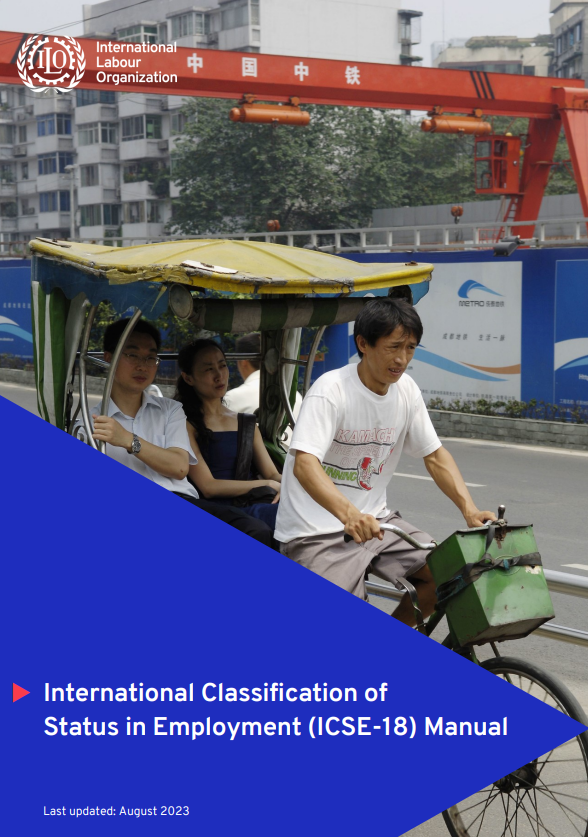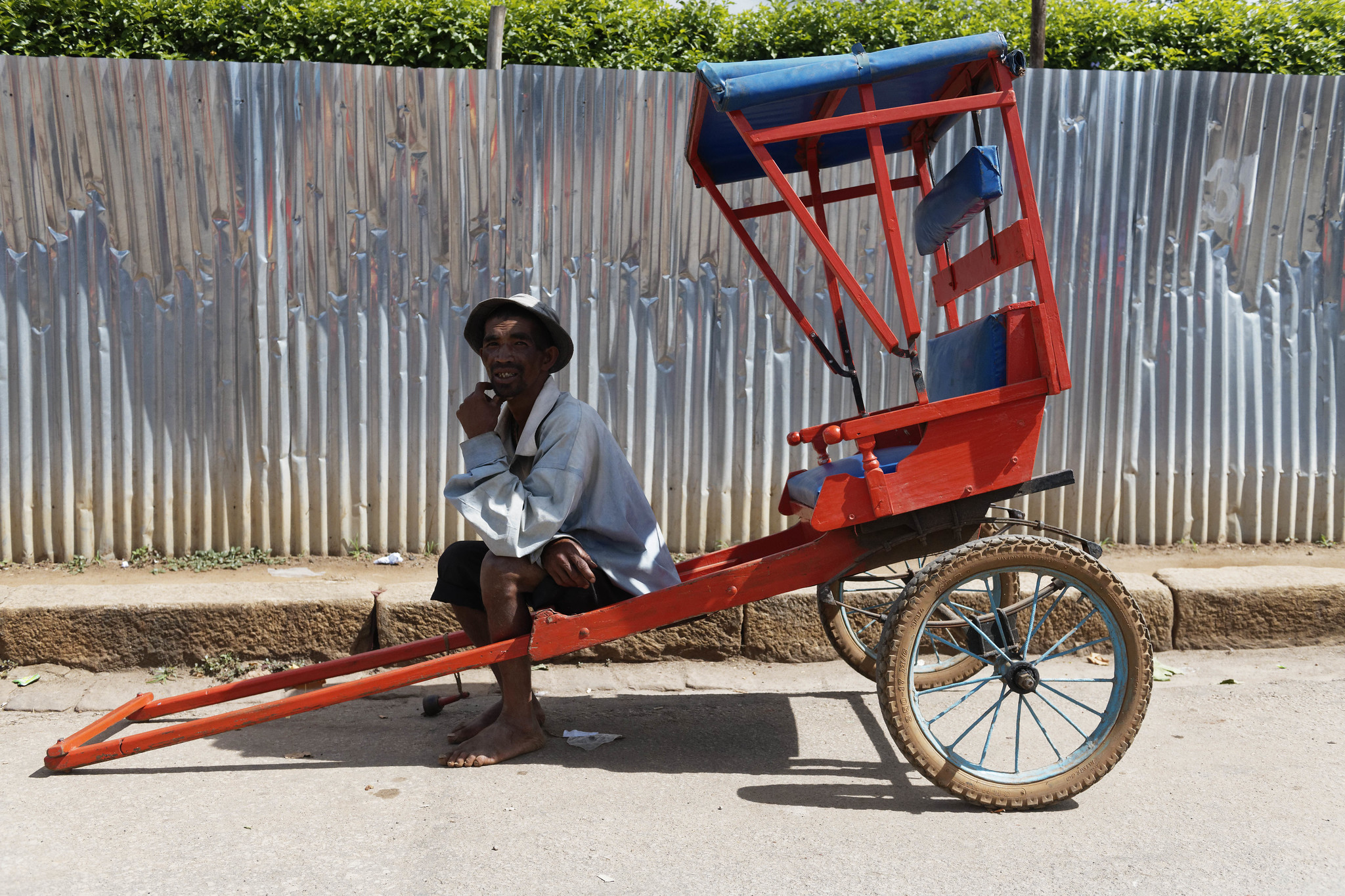Table of Contents
Related pages
Introduction
The International Classification of Status in Employment (ICSE) plays a crucial role in labour statistics, serving as a cornerstone for generating data that sheds light on the composition of the workforce based on their status in employment category. Providing accurate statistics on for example the number of employers, own-account workers, employees etc. and capturing shifts between different categories of status in employment are all essential for gaining a comprehensive understanding of the dynamics within a country’s labour market.
ICSE’s significance also extends its importance to encompass various other domains of statistical analysis. It provides invaluable insights into areas such as wage statistics, earnings data, labour costs, job-creation and the identification of entrepreneurs, persons with jobs of high-risk, lower-income, and less security and is also embedded in the statistical definition of informal employment.
The latest International Classification of Status in Employment (ICSE-18) classifies jobs in employment for pay or profit into ten detailed categories based on the type of authority that the worker is able to exercise in relation to the work performed and the type of economic risk to which the worker is exposed, which then are aggregated according to two alternative classification hierarchies:
- International Classification of Status in Employment according to type of authority (ICSE-18-A), and
- International Classification of Status in Employment according to type of economic risk (ICSE-18-R).
Meanwhile, the International Classification of Status at Work (ICSaW-18) provides an organizing framework for statistics classified by status at work. It covers all jobs and work activities in all forms of work, including own-use production work, employment, unpaid trainee work, volunteer work and other forms of work. At its most detailed level, it comprises 20 mutually exclusive categories. The detailed status at work categories may be aggregated, based on the type of authority exercised by the worker, to form eight broad groups, which may be further aggregated to form a dichotomy between independent workers and dependent workers.
ICSE-18: Status in Employment
With the adoption of the 20th ICLS resolution concerning statistics on work relationships in 2018 a new classification of status in employment ICSE-18 was introduced. ICSE-18 includes 10 detailed categories of status in employment that all jobs can be categorized in thus creating the opportunity to provide a more detailed picture of the different work relationships. The same ten detailed categories can be organized according to the type of economic risk associated with the job and the type of authority the person has over the economic unit and in relation to organize his or her work.
When the ten detailed categories are organized according to type of authority this creates a dichotomy between independent workers, consisting of the aggregated categories of employers and independent workers without employees and dependent workers: consisting of dependent contractors, employees and contributing family workers.
When the same ten detail categories are organized according to type of economic risk, this on the other hand creates a dichotomy between workers in employment for profit: consisting of the aggregated categories of Independent workers in household market enterprises, dependent contractors and contributing family workers and workers in employment for profit consisting of Owner-operators of corporation and employees.
That the same ten detailed categories in ICSE-18 can be organize according to the two different dimensions clarifies the somewhat blurry boundaries in ICSE-93 due to that the two dimensions were combined in a single hierarchy. In addition, it fulfils the need of being able to provide statistics on ICSE for various types of labour market analysis including statistics on wages, earnings and labour costs and for providing data for national accounts.
In addition, the 20th ICLS resolution concerning statistics on work relationships contains an extended classification International classification of status at work (ICSaw-19) that covers all jobs and work activities in all forms of work.
ICSE-18-A: Status in Employment according to type of authority
This classification provides a dichotomy between independent workers (groups A and B) and dependent workers (groups C-E).
ICSE-18-A is suitable for various types of labour market analysis, including analysis of the impact of economic cycles on the labour market, and of government policies related to employment creation and regulation. It is also the most suitable hierarchy for use as an input variable in the compilation of statistics classified by socio-economic status.
The classification is as follows:
Independent workers
A. Employers
11 – Employers in corporations
12 – Employers in household market enterprises
B. Independent workers without employees
21 – Owner-operators of corporations without employees
22 – Own-account workers in household market enterprises without employees
Dependent workers
C. Dependent contractors
30 – Dependent contractors
D. Employees
41 – Permanent employees
42 – Fixed-term employees
43 – Short-term and casual employees
44 – Paid apprentices, trainees and interns
E. Contributing family workers
51 – Contributing family workers
ICSE-18-R: Status in Employment according to type of economic risk
This classification provides a dichotomy between employment for pay (groups G and D) and employment for profit (groups F, C and E). This latter dichotomy is analogous to the traditional distinction between paid employment and self-employment, used for example in the System of National Accounts.
ICSE-18-R is suitable for the provision of data for national accounts, for the identification of wage employment and its distribution, for the analysis from the perspective of economic risk of the impact of economic cycles and government on the labour market, and for the production and analysis of statistics on wages, earnings and labour costs.
The classification is as follows:
Workers in employment for profit
F. Independent workers in household market enterprises
12 – Employers in household market enterprises
22 – Own-account workers in household market enterprises without employees
C. Dependent contractors:
30 – Dependent contractors
E. Contributing family workers
51 – Contributing family workers
Workers in employment for pay
G. Owner-operators of corporations
11 – Employers in corporations
21 – Owner-operators of corporations without employees
D. Employees
41 – Permanent employees
42 – Fixed-term employees
43 – Short-term and casual employees
44 – Paid apprentices, trainees and interns
ICSE-93
This classification presents the former statistical standard, but it is still the most widely used by national statistical systems in the production of labour statistics. It contains 5 categories that can be organized into one single hierarchy as follows, plus an additional category for workers not classifiable by status.
Paid employment
1) Employees
2) Employers
3) Own-account workers
4) Members of producers’ cooperatives
5) Contributing family workers
ICSaW-18: International Classification of Status at Work
The detailed status at work categories may be aggregated, based on the type of authority exercised by the worker, to form eight broad groups which may be further aggregated to form a dichotomy between independent workers and dependent workers.
Each of the detailed status at work groups in ICSaW-18 relates to only one form of work. The groups that relate to employment have the same definitions as in ICSE-18. The aggregate groups that include both employment and other forms of work, have a broader scope in ICSaW-18 than in ICSE-18-A and in some cases are assigned a different name.
The classification is as follows:
Independent workers
1. Employers
11 – Employers in corporations
12 – Employers in household market enterprises
13 – Employers in own-use provision of services
14 – Employers in own-use production of goods
2. Independent workers without employees
21 – Owner-operators of corporations without employees
22 – Own-account workers in household market enterprises without employees
23 – Independent workers in own-use provision of services without employees
24 – Independent workers in own-use production of goods without employees
25 – Direct volunteers
Dependent workers
3. Dependent contractors
30 – Dependent contractors
4. Employees
41 – Permanent employees
42 – Fixed-term employees
43 – Short-term and casual employees
44 – Paid apprentices, trainees and interns
5. Family helpers
51 – Contributing family workers
52 – Family helpers in own-use provision of services
53 – Family helpers in own-use production of goods
6. Unpaid trainee workers
60 – Unpaid trainee workers
7. Organization-based volunteers
70 – Organization-based volunteers
9. Other unpaid workers
90 – Other unpaid workers
Aggregates based on form of work
Subsets of the detailed categories in ICSaW-18 may be used to present statistics on work relationships in own-use production work, employment, volunteer work, child labour and time-use on a conceptually consistent basis, regardless of the scope and source of the statistics. The categories for own-use production work and volunteer work may be aggregated according to the form of work as follows:
Workers in own-use production
(i) Workers in own-use provision of services
13 – Employers in own-use provision of services
23 – Independent workers in own-use provision of services without employees
52 – Family helpers in own-use provision of services
(ii) Workers in own-use production of goods
14 – Employers in own-use production of goods
24 – Independent workers in own-use production of goods without employees
53 – Family helpers in own-use production of goods
Volunteer workers
25 – Direct volunteers
70 – Organization-based volunteers
Methods
Supporting the transition to the new standards the department of statistics are actively supporting countries in testing and implementing ICSE-18 and are carrying out methodological assistance to countries, capacity building events and awareness raising. The department has also continually updated the proposed methods for integrating ICSE-18 in household surveys in the ICSE-18-manual. The methodology will continue to be updated to reflect the latest development and gained experience.
Note: Many publications are available only in English. If available in other languages, a new page will open displaying the options on the right.

International Classification of Status in Employment (ICSE-18) manual
A resolution adopted at the 20th ICLS includes a new international classification of status in employment (ICSE-18). This manual describes the revised classification, how it differs from the previous version, and how to implement it in a household survey.



Resolution concerning the International Classification of Status in Employment (ICSE)
Adopted by the 15th ICLS (1993), this resolution is designated as the International Classification of Status in Employment (ICSE-93) and classifies jobs held by persons at a point in time.







